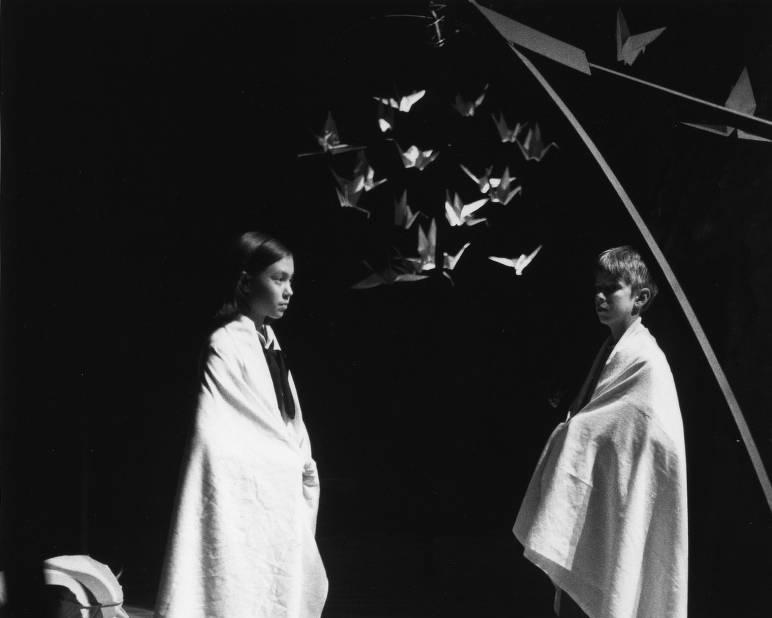Benjamin Moredecai, Edward Stern, and Gregory Poggin founded Indiana Repertory Theatre (IRT) in 1972. They developed plans for a new theatre while doctoral students at Indiana University-Bloomington. To choose a site for their theater, they wrote to the mayors of 99 American cities. Indianapolis was chosen because of the enthusiasm and interest expressed.

Mordecai and Stern served together as IRT’s first artistic directors, with Stern eventually filling the role alone. The premier production opened during October 1972, at the on East Michigan Street. IRT held its productions in the facility’s 396-seat auditorium, a converted ballroom, for eight seasons.
In 1979, playing to near-capacity crowds at the Athenaeum, IRT began the search for a larger performing space that would allow for future growth. In 1980, IRT moved to its present location, the on West Washington Street near the . The new, larger facilities also gave the theatre the capacity to produce plays using more than one set. That year, IRT appointed as artistic director.
Before being taken over by IRT, the Indiana Theatre had been scheduled for demolition. A Spanish Baroque movie palace that also has Indian and Egyptian motifs, the building was constructed in 1927 and was listed on the National Register of Historic Places in 1979. With over $5 million in funding from private as well as federal and local government sources, IRT renovated the theatre, restoring the lobby to its original condition, dividing the theatre into three performing areas, and creating rehearsal rooms.
IRT’s regular-season performances are held in the 600-seat Mainstage theatre, which features a variable-thrust proscenium stage. The 250-seat Upperstage, above the Mainstage, is used for some performances by , seminars, and IRT Junior Works productions. The building also houses a 150-seat Cabaret Club, and IRT’s production facilities and administrative offices.

Following Haas’ death in 1991, Libby Appel became IRT artist director. That same year, the Indiana General Assembly named the IRT the “Theatre Laureate” of the state. IRT also inaugurated the Education Outreach Program in 1991. The program includes Classic Theatre for Youth, which makes a Mainstage production of a classic available each year to high school students from around the state; Junior Works, annually offering three productions geared to young audiences; and student matinees of Mainstage plays for junior high and high school students.
During a usual season, IRT provides professional theater experiences to thousands of students and teachers. Janet Allen, who first served as dramaturg and then associate director, became artistic director in 1996.

IRT has become one of the leading regional theatres in the United States. The Indiana Repertory Theatre (IRT) is Indiana’s largest fully professional not-for-profit professional theatre, the only Indiana resident theatre that produces a full season of plays using full-time professionals. IRT, which employs both a resident repertory company and guest artists, offers a varied repertoire of classics, enduring popular favorites, and recent plays by American and British authors. IRT often presents Indiana, American, and world premieres.
The company has won prestigious grants from the National Endowment for the Arts, the Lila Wallace-Reader’s Digest Fund, the Theatre Communications Group-Pew Charitable Trusts, the Shubert Foundation, and the Kresge Foundation. IRT also received a Joyce Award from the Joyce Foundation. In addition, as a nonprofit organization, IRT derives 45 percent of its operating income from contributions, which allows the company to keep ticket prices and its other programs affordable.
In 2016, IRT took over management of the Indiana Theatre building from the City of Indianapolis. In 2018-2019, 40,000 students and teachers from 54 of Indiana’s 92 counties were involved its educational programming, making IRT one of the most youth-oriented professional theaters in the country. IRT also has technical and administrative internship programs.

Help improve this entry
Contribute information, offer corrections, suggest images.
You can also recommend new entries related to this topic.